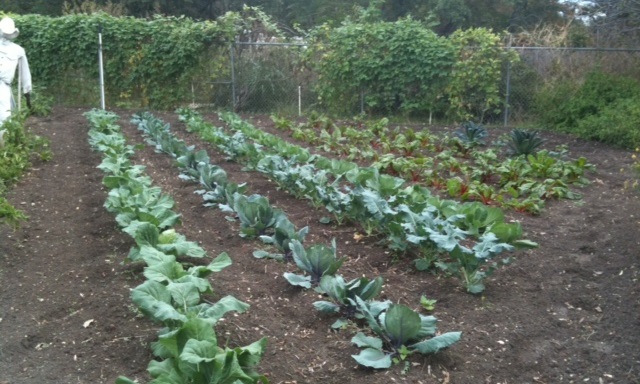It is so easy to get excited about planting a fall garden. The garden is looking bare from pulling out the old, tired plants from spring, and the thought of fresh broccoli and lettuce is making me hungry!
So, let’s get started! Whether you have an existing garden or are establishing a new one, the preparation is basically the same.
First, determine if your soil is clay-like, sandy or gravelly. Each type of soil requires a different type of amendment strategy, as well as a different fertilization program.
Clay Soil, as most of you know, can be quite a challenge to grow a garden in, as it holds moisture during rainy seasons, and we lose crops to rotted root systems. Amending the clay soil with various materials can greatly improve the drainage and provide “pore space” for oxygen, which is needed by the plant’s roots. Here are some suggestions for amending a heavy clay soil:
Expanded shale:Also known as haydite, is a lightweight, naturally occurring aggregate that has been kiln heated to produce a natural, non-toxic, highly absorptive granule with a neutral pH. It will not degrade or compress, and does not need to be applied each year. Because of its porosity, it has the capability of holding both air and water. Problems of soil compaction are reduced when expanded shale is worked into the soil uniformly. Add 3”-4” to the top of the soil and work in well to a depth of 8”-10”. It can also be used in conjunction with additions of composted organic matter.
Compost: Spread 3”-4” of organic compost on your new vegetable garden and till or work in to a depth of 8”-10”. Compost improves soil drainage and introduces microorganisms to the soil. As it “breaks up” the clay particles, the spaces between are made available to air-air space is important to prevent anaerobic bacteria from rotting plant roots! Compost also contributes to soil “tilth”, or soil structure. Compost should be re-applied each time you plant your garden.
Decomposed granite: Add 2’-3’ of a coarse grade decomposed granite to clay soils to your garden soil, along with 3” of composted organic matter. DO NOT ADD SAND TO CLAY SOILS! THIS MAKES CONCRETE!
Amending sandy or gravelly soil:
Adding organic matter is the key to gardening in sandy or gravelly soils. Compost adds populations of beneficial bacteria and fungi, as well as residual bacterial and fungal “glues” which help bind sand particles together, while soaking up and holding moisture. It is recommended to add up to 40% of compost to the soil volume for a significant improvement in water retention and crop yield.
In addition to compost, adding coir, a dried compressed coconut husk product, will immediately increase the sandy soil’s moisture holding capacity, as it has been shown to hold up to 5 times its weight in water. Additionally, the lignins in coir feed and sustain beneficial fungi, which work in conjunction with beneficial bacteria to bind sand grains with “glues” to transform them into a “sandy loam” soil.
Add 1”-2” of coir to the surface of the soil with your 3” of compost, and till or turn in uniformly to a depth of 8”-10”. Adding composted poultry manure at this time as well will add supplemental nitrogen and aid in maintaining the carbon:nitrogen ratio at an acceptable level and avoid the “first year drop” in vegetable yields the first season of incorporation.
I hope I have given you some ideas for improving your garden soil. Bring a sample of your soil to Backbone Valley Nursery, along with measurements of your garden, and we will be glad to help you with the amounts needed to amend your soil.
Happy Gardening!
